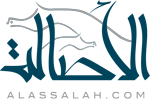By Katie Navarra
What can the whorl on your horse’s face tell you? Perhaps more than you thought: Researchers have learned that the height, location, and rotation direction of a horse’s facial hair whorl could help predict which direction your horse will turn in response to a frightening stimulus.
In a study of 19 horses, researchers determined that those with a clockwise whorl turned to the right and those with a counterclockwise whorl turned to the left when someone opened an umbrella unexpectedly in front of them.
“I was a little surprised that we found a correlation in mature, trained horses,” said Chelsey Shivley, DVM, a PhD candidate in Colorado State University’s Department of Animal Sciences, in Fort Collins.
Although the sample size was relatively small, “this is an interesting area of research,” Shivley said. “There is definitely room for more knowledge in laterality, especially from animals that we ask to perform maneuvers in both directions.”
Much of the relationship between hair whorls and behavior has been observed in other animals, such as cattle and dogs. One of Shivley’s coauthors, Temple Grandin, PhD, has observed that whorls on cattle can provide indications about the individual’s temperament. “She has noticed that when a whorl is above the eyes on a cow the animal tends to be flightier than an animal with a lower hair whorl,” Shivley explained.
While further research is needed to confirm laterality and whorl characteristics, Shivley said, “every time I look at a horse, I look at its whorl and take that into consideration.”
For example, she watches to see if the horse puts its left or right leg forward first while grazing or if the horse prefers one lead over another and if that action correlates to the rotation of the horse’s whorl.
“If we know that a horse prefers the right or left side of its body then we can modify our training and/or handling to help the horse perform what we are asking,” she concluded.



